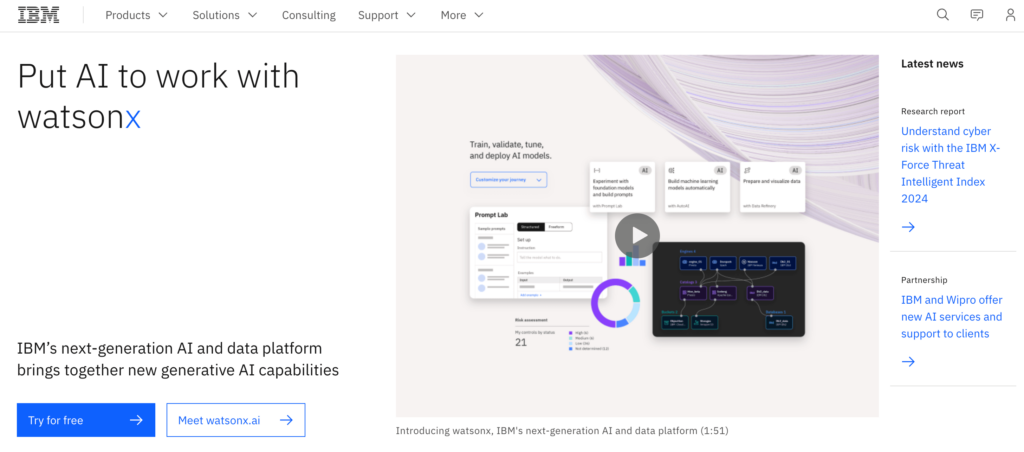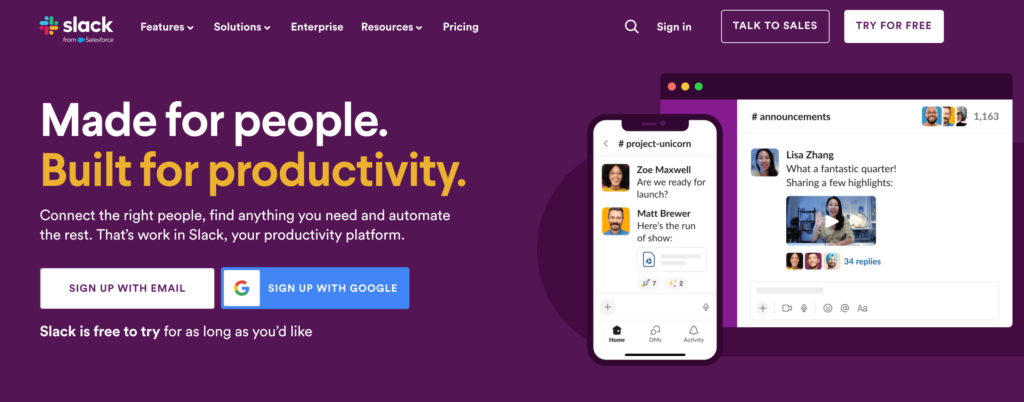
8 B2B Web Design Best Practices You Can’t Ignore
Here’s a shocking piece of information: a staggering 94% of first impressions are design-related. Imagine walking into a conference room to pitch your services, but instead of a polished presentation, your slides are disorganized and difficult to read. That’s the online equivalent of a poorly designed B2B website. Just as a well-tailored suit can command the room, a sleek, user-centric web design immediately establishes credibility and sets the tone for professional relationships.
The importance of web design for B2B companies cannot be overstated, especially in this digital era, where first impressions are made online. A well-designed website serves as the heart of your digital marketing efforts and is essential for establishing credibility and engaging potential clients.
With the landscape of digital business constantly evolving, adhering to B2B web design best practices is not just recommended; it’s essential for staying competitive and relevant. A survey by Adobe reveals that companies with a strong design outperform their competitors by 219% over a five-year period, underscoring the significant impact of design on business success. This statistic highlights the critical role that effective B2B web design plays in achieving and maintaining market leadership. Therefore, we’ve listed the best practices for B2B website design for you below. Let’s get started.
What is B2B Website Design?
B2B website design refers to the strategies, methodologies, and technical approaches used in creating and maintaining websites that cater to the needs of businesses selling products or services to other businesses. Unlike B2C websites, which often focus on emotional engagement and broad appeal, B2B websites must address the specific needs, challenges, and decision-making processes of business clients, emphasizing functionality, professionalism, and clarity.
8 Best Practices for B2B Website Design
As we take a look into the best practices for B2B website design, it’s important to remember that these guidelines are not just about aesthetics. They are about creating a user experience that guides potential business clients through your digital ecosystem efficiently and effectively.
Here are eight to ten best practices that stand out:
1. User-Centric Design in B2B Websites
Every click could lead to a new business opportunity. Therefore, the importance of a user-centric design for B2B websites can’t be overlooked. Yes, you want to make your website look good, and we understand that. However, your approach shouldn’t be just about making a website look good. You need to craft an experience that speaks to your audience, guiding them smoothly from their initial visit to the desired action.
Navigation: The Roadmap to Success
Imagine entering a new city without a map. That’s how visitors feel when they land on a poorly navigated website. A successful B2B website, like IBM’s, offers a masterclass in navigation. With a clean, intuitive menu that categorizes products and services clearly, IBM ensures visitors can easily find what they’re looking for without feeling overwhelmed. Dropdown menus are concise, and the search function is both sophisticated and easy to use, demonstrating how seamless navigation can significantly enhance the user experience.

Page Loading Speed: The Need for Speed
Unfortunately, we live in a fast-paced world and patience is a scarce commodity, especially online. A recent research underscores this, revealing that 47% of users expect a website to load in two seconds or less.
B2B websites like Shopify understand this urgency and optimize their site’s loading speed to keep bounce rates low and engagement high. They achieve this through optimized images, minimalistic design, and leveraging browser caching. And the result they achieve is a swift, efficient site that respects the user’s time, encouraging them to stay and explore. As a user-centric design is particularly crucial for B2B eCommerce, you must ensure that your platform facilitates an effortless buying process.
2. The Responsive Design Maze for B2B Websites
As B2B decision-makers increasingly use a variety of devices to research potential partners and solutions, ensuring your platform performs flawlessly on any screen size is a necessity. But how do you tackle the technical complexities of responsive design for intricate B2B platforms?
The Technical Blueprint
Responsive design for B2B platforms involves a blend of flexible grids, images, and the intelligent use of CSS media queries. The goal is to create a web experience that adapts to the user’s device, providing an optimal viewing experience—easy reading and navigation with minimal resizing, panning, and scrolling—across a wide range of devices.
One of the first steps is to adopt a mobile-first approach. This means designing for the smallest screen first and then scaling up. It’s not just about making things fit on a smaller screen though. You should prioritize content and functionality that your B2B audience needs on the go.
But, remember that implementing responsive design is not a set-it-and-forget-it task. It requires continuous testing and refinement. Thus, a website design agency can support you throughout this journey.
The path to creating a responsive B2B platform might seem daunting, but with the right technical approach, the aid of powerful frameworks and web design tools, it’s entirely achievable.
3. Crafting a Cohesive Brand Identity
For B2B companies, where decisions are weighed heavily and relationships are built on trust, a cohesive brand across all digital platforms isn’t something just nice to have—it’s an element leading you to success. So, how do you ensure your brand stands tall and unwavering, no matter where it’s encountered?
First and foremost, you should be consistent. This means your brand’s visual elements—colors, logos, typography—should be uniform across your website, social media profiles, email campaigns, and any other digital touchpoints. But it goes deeper than just visuals. Your brand’s voice, tone, and messaging should echo with the same clarity and conviction, whether it’s a tweet (do we still call it a tweet?), a blog post, or an email newsletter.
Take Slack, for example. With its playful, yet professional demeanor, Slack maintains a balance that resonates across its website, app interfaces, and social media. Its consistent use of friendly language, coupled with a bright and inviting color scheme, reinforces its brand as approachable and efficient, a digital workspace where teams love to communicate. It’s worth mentioning that for B2B SaaS companies like Slack, the integration of specific B2B SaaS marketing strategies into their branding efforts can further position your brand as a leader in your industry.

Tips for Brand Consistency
- Create a Brand Style Guide: This is your brand’s bible. It should detail your visual and verbal brand elements, from logos and color palettes to tone of voice and messaging guidelines. Make it accessible to everyone in your organization to ensure uniformity in all communications.
- Leverage Digital Asset Management (DAM) Tools: These platforms help you store, organize, and share your brand assets in one central location, ensuring that everyone uses the correct, up-to-date versions.
- Regular Audits: Periodically review your digital platforms to ensure they align with your brand guidelines. This is important because both your brand evolves and new digital platforms emerge.
As you navigate the complexities of establishing a strong online presence, keep in mind that partnering with a B2B digital marketing agency can provide the expertise and insights needed to elevate your web design and overall digital strategy.
4. Mastering Content Strategy for B2B Audiences
Diving into the world of B2B content strategy is like embarking on a quest for the Holy Grail of engagement and conversion. It’s a journey that requires not just understanding what your audience needs but also anticipating their questions, challenges, and goals. The secret sauce? Creating content that educates, inspires, and, most importantly, solves problems.
First up, know the audience. Knowing job titles or industries isn’t enough. You need to dive deep into the pain points, aspirations, and decision-making processes of your target personas. You can benefit from surveys, interviews, and analytics; these tools can offer invaluable insights here. Next, map out the buyer’s journey. From awareness to consideration to decision, each stage requires tailored content that nudges the reader closer to that coveted ‘yes.’
But here’s where many B2B strategies really shine: thought leadership. By positioning your brand as a beacon of knowledge and insight, you not only attract attention but also build trust. Think IBM’s research reports or HubSpot’s comprehensive guides. These pieces aren’t just informative; they’re authoritative, setting the standard for industry knowledge.
And finally, let’s not forget about format diversity. Blogs, whitepapers, infographics, webinars—mixing it up keeps your audience engaged and caters to different preferences and needs.

5. Elevating Lead Generation in B2B Websites
When it comes to B2B websites, lead generation is the name of the game. But how do you capture those leads without disrupting the user experience? It’s all about blending creativity with strategy, ensuring that your lead generation strategies are both innovative and intuitively integrated into your site’s design.
Think beyond static PDFs to quizzes, assessments, or interactive calculators that provide personalized insights or recommendations. For example, a financial software company might offer a ROI calculator for potential clients to see how much they could save. These tools not only engage users but also offer valuable data in exchange for their contact information, hitting that sweet spot of value for both parties.
Next up, chatbots and AI-driven assistants can revolutionize your lead capture strategy. By engaging visitors with conversational interfaces right when they land on your site, you can guide them through a tailored journey, answering questions, and gently nudging them towards leaving their contact details—all without the need for a human on the other end 24/7.
But where and how you place these elements is just as crucial as what they are. B2B web design best practices suggest keeping lead generation forms or tools above the fold where they’re immediately visible, but without obstructing content. This could mean a subtle chatbot icon in the corner or an interactive tool embedded within relevant blog posts. The key is to ensure these elements feel like a natural part of the user’s journey, not an interruption.
Design-wise, clarity and simplicity reign supreme. Forms should be concise, asking only for essential information to reduce friction. Use contrasting colors to make your call-to-action (CTA) buttons stand out, and don’t shy away from testing different placements or wording to see what resonates best with your audience.
6. SEO for B2B Websites
Well, one of us had to mention SEO at some point.
SEO – three letters that can make or break your B2B website’s visibility in the digital jungle. First off, content quality – you’ve guessed it – remains king. But we’re not just talking about throwing in a few keywords here and there. Google’s sophisticated algorithms now prioritize content that genuinely answers the searcher’s intent – think comprehensive guides, insightful blog posts, and case studies that address specific industry challenges.
Even if we’ve covered it above, it is worth mentioning again that user experience (UX) has taken center stage. This means your B2B site needs to be not just mobile-friendly but also fast-loading, easy to navigate, and accessible to all users. Remember, a frustrated visitor is a lost potential lead.
Now comes our favorite part: E-A-T. Especially critical for B2B websites, Google wants to see that your content is created by knowledgeable professionals and that your site is a reputable source in your industry. This is where backlinks from respected industry sites, author bios, and clear, accurate content come into play.
But beware the pitfalls! Keyword stuffing is a big no-no; it’s not 2005 anymore. Over-optimizing can do more harm than good, making your content unreadable and penalizing your rankings. Another common mistake is neglecting local SEO. Even B2B companies can benefit from local search visibility, especially if you serve specific geographic markets or have physical locations.
7. Leveraging Social Proof in B2B Web Design
In the world of B2B, where trust and credibility are the currency of choice, effectively showcasing social proof can significantly tip the scales in your favor. Testimonials, case studies, and client logos aren’t just decorative elements!They’re, in fact, powerful testimonials to your company’s ability to deliver results.
Incorporating client logos on your homepage or a dedicated “Our Clients” section can instantly boost your credibility. Think of it as the B2B equivalent of name-dropping, but with the added benefit of showing real partnerships. For testimonials, the significance lies in authenticity. Instead of generic praise, focus on detailed accounts that highlight specific benefits your clients have gained from your services. Video testimonials can be particularly effective, as they add a layer of personal connection and authenticity that text alone can’t match.
As for collecting this social proof, start by building strong relationships with your clients. A satisfied client is often happy to provide a testimonial or participate in a case study, especially if they see value in the partnership. Offering to feature their story on your website can also serve as a promotional tool for their business, creating a win-win scenario.

8. Security Measures to Shield Against Modern Threats
When it comes to digital security, B2B websites find themselves in the crosshairs of sophisticated threats ranging from data breaches and ransomware attacks to phishing schemes and DDoS (Distributed Denial of Service) assaults. While also jeopardizing sensitive data, these threats also erode trust with your clients – a currency that’s hard to earn and easy to lose in the B2B world. But fear not! By adopting a proactive stance and implementing a security framework, you can shield your digital assets from the nefarious elements of the web. Security-conscious designs play a vital role in B2B web practices, much like the strategies for mitigating vulnerabilities such as those detailed in “CVE-2024-47575“, which offer crucial data and insights into safety measures.
First step to take is to make sure your website is served over HTTPS by obtaining an SSL certificate. This encrypts data in transit, making it significantly harder for attackers to intercept sensitive information. Regularly updating your website’s software, including the CMS (Content Management System), plugins, and themes, is another crucial step to patch vulnerabilities that could be exploited by attackers.
Another crucial element of a secure B2B website is strong password policies and two-factor authentication (2FA) for all user accounts, adding an extra layer of defense against unauthorized access. Additionally, implementing a web application firewall (WAF) can help block malicious traffic and prevent common attacks such as SQL injection and cross-site scripting (XSS).
Regular security audits and penetration testing are invaluable b2b web design practices, allowing you to identify and remediate vulnerabilities before they can be exploited. Moreover, educating your team about the latest phishing tactics and social engineering scams is essential, as human error remains one of the weakest links in cybersecurity. And finally, data backup and recovery plans are your safety net, ensuring that, in the event of a security breach, your website can be restored and operational with minimal downtime.
Data backup and recovery plans are your safety net, ensuring that, in the event of a security breach, your website can be restored and operational with minimal downtime. Lastly, compliance with data protection regulations, such as GDPR for companies dealing with EU citizens’ data, not only safeguards against legal repercussions but also signals to your clients that you’re serious about protecting their information. —- A simple, clear privacy policy for website is a key part of that, showing your commitment to transparency and trust.
Conclusion
By integrating these B2B web design best practices into your strategy, you can create a website that not only looks professional but also effectively converts visitors into loyal clients. Remember, in the B2B sector, your website is often the first point of contact between your business and potential clients. Making a strong, positive impression through your website design for B2B is crucial for long-term success.






















